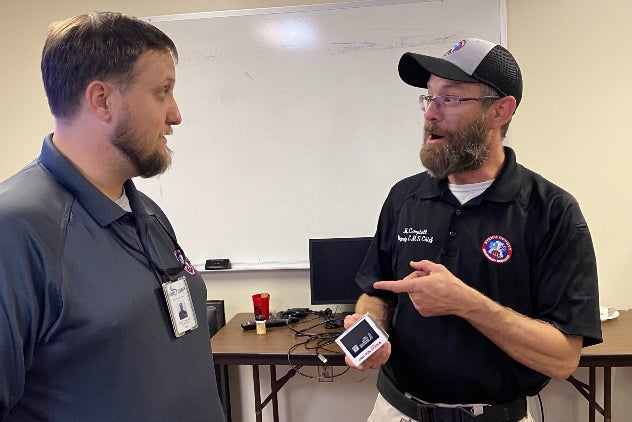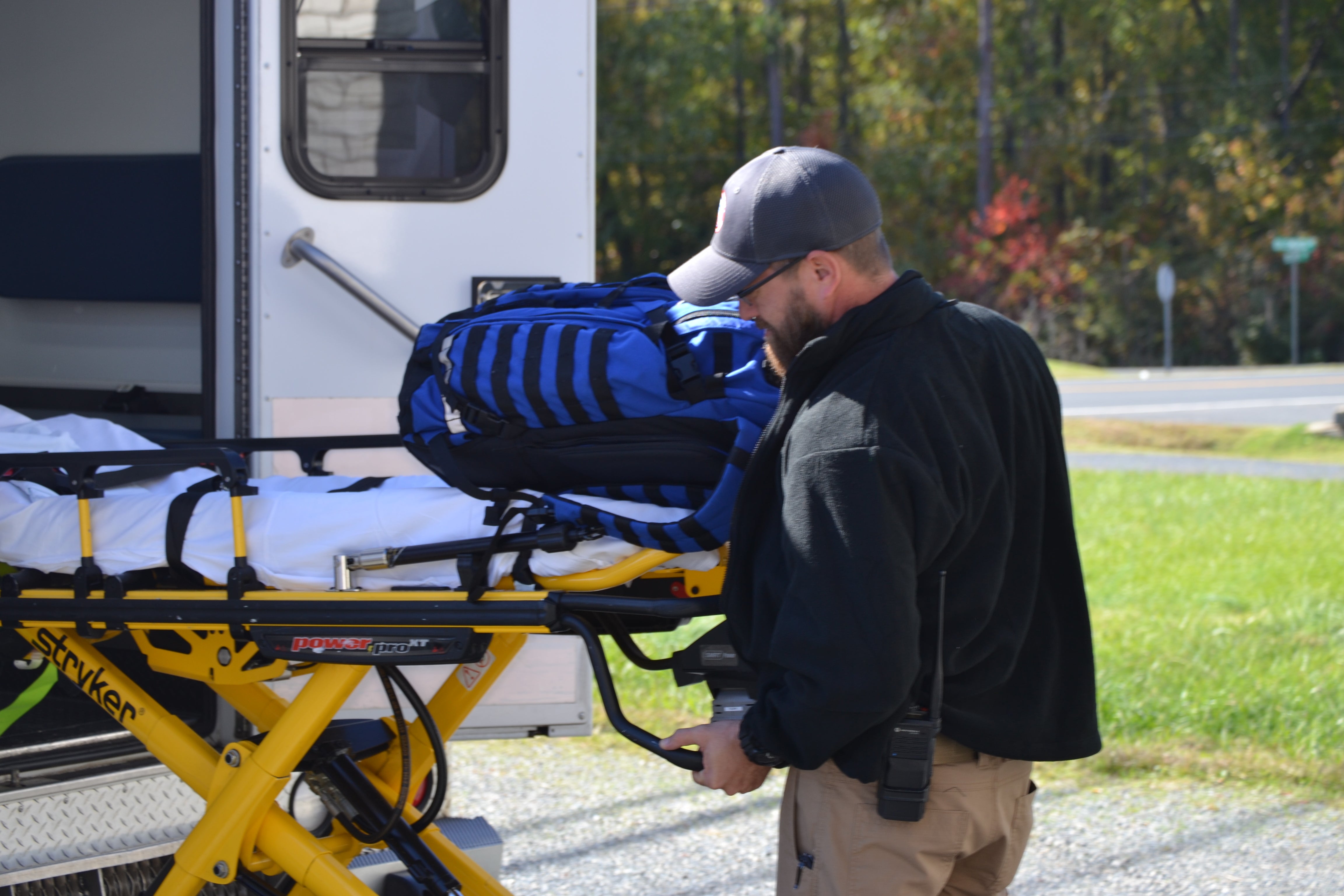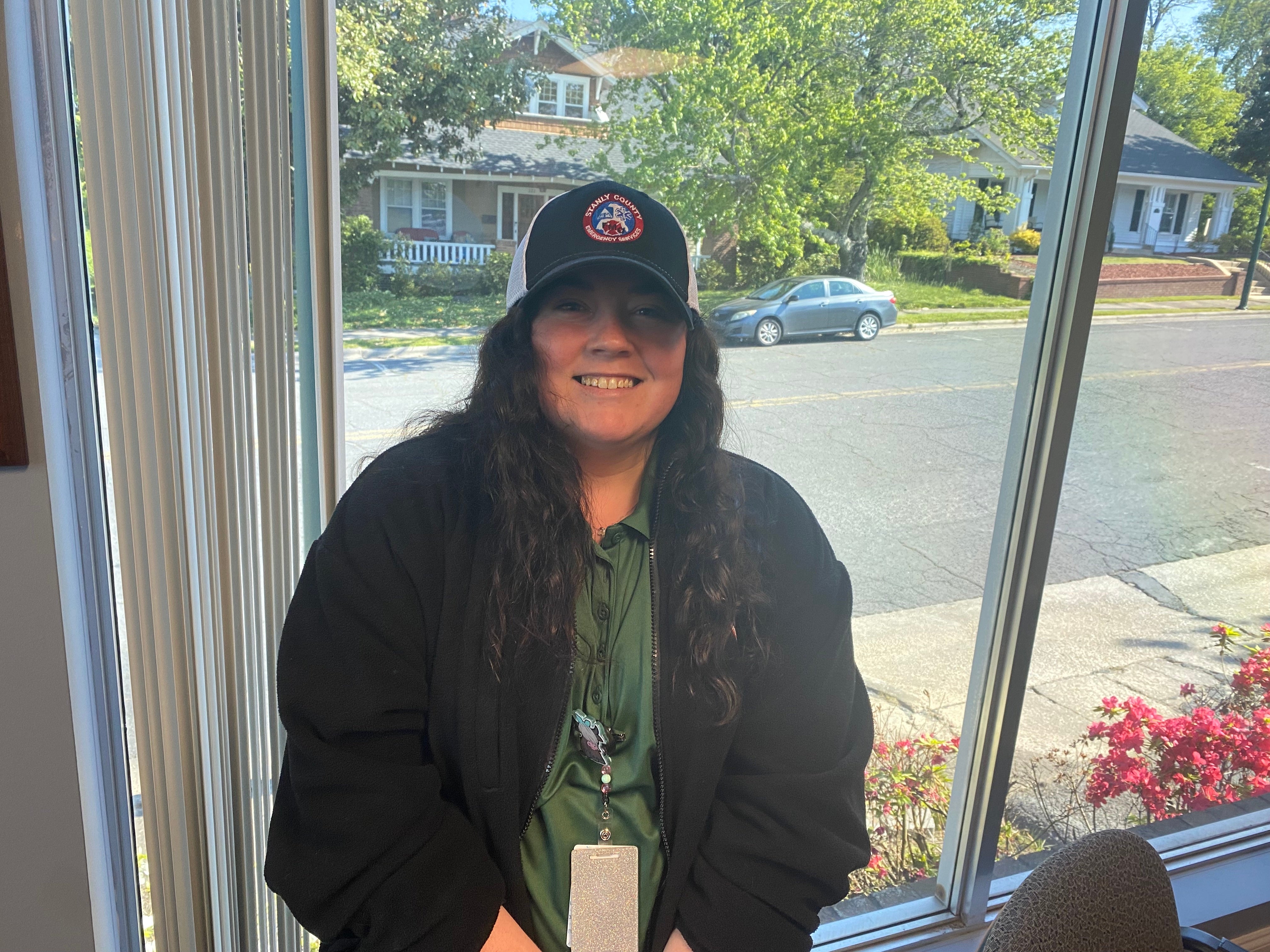Stanly County continues to see reduction in opioid overdoses
Published 11:03 am Tuesday, April 25, 2023

- Stanly County EMS Chief Dale Chandler and deputy chief Mike Campbell have seen a decrease in the number of opioid overdose calls their paramedics have responded to over the past three years.
|
Getting your Trinity Audio player ready...
|
Stanly County paramedics responded to roughly 40% less opioid overdose calls last year compared with 2020, according to new data shared with The Stanly News & Press — illustrating the steady progress being made in the ongoing fight against the opioid epidemic in Stanly County, which has enacted a heavy toll on many in the community.
Paramedics involved with the county’s community paramedic program, a post-overdose response team created in 2019 to exclusively target people suffering from opioid overdoses and help connect them with treatment options, responded to 158 opiate overdose calls last year, down from 192 in 2021 and 258 in 2020.
So far in 2023, the community paramedics have responded to 33 opioid overdose calls and are on pace to respond to roughly 130 calls for the year, according to Deputy EMS Chief Mike Campbell, himself a former community paramedic and current training officer.
There are four full-time community paramedics, each working rotating 24-hour shifts, along with five reserve paramedics, Campbell said.
“The opioid crisis is still very real in Stanly County and across North Carolina and unfortunately it’s going to be a real thing for the foreseeable future,” Campbell said. “But the light at the end of the tunnel is that we’ve recognized it as something real and we’ve made interventions and set goals and standards to combat that.”

Stanly community paramedic Mike Campbell unloads one of the EMS gurneys.
The decrease in calls comes as the county no longer ranks among the top 10 in the state in opioid overdoses, measured by the rate of overdoses showing up in hospital emergency rooms — something that was a constant throughout much of 2018 and 2019.
Many other groups and organizations, including Uwharrie Harm Reduction Initiative (UHRI), Will’s Place and Project Lazarus, have come together alongside the community paramedics to network and share resources to make sure everything is being done to lessen the impact of the crisis.
“At the end of the day, the boots on the ground, the community paramedics that are out in the field, they’re what makes this program work,” EMS Chief Dale Chandler said.
Chandler and Campbell play key roles, but “our roles don’t matter if the folks in the field are not doing an exceptional job and they do day in and day out,” Chandler said.
Importance of Narcan, Suboxone
While many groups have played key roles in alleviating the problem, much of the recent success comes from the work of first responders, including firefighters, police officers and paramedics.
They are the ones that daily respond to overdose calls and provide people with Narcan, a nasal spray that rapidly reverses an opioid overdose. Underlining the importance of the medication, Campbell compared it to AEDs being used when someone goes into cardiac arrest or EpiPens being administered when someone has a severe allergic reaction.
“I’m extremely grateful for our first responders in Stanly County,” Campbell said, especially the fire and police personnel. “They’re the first ones to get there and I think credit should be given where credit is due. If it wasn’t for those first arriving on the scene, there’s a chance we might not even be able to provide services.”
A total of 146 Narcan doses were administered by paramedics last year, per the EMS data, down from 195 in 2020.
With the recent news that Narcan will be over-the-counter later this year, Campbell thinks it could affect people in Stanly — depending on how much it costs.
“I think it’s a wait and see,” Campbell said, noting the medication is already available to the public for free throughout the county, including the Stanly County Health Department and the Stanly County EMS. “Having more Narcan available to people is never a bad thing.”
Campbell hopes Narcan will soon become a household item, with the majority of families storing Narcan in their medicine cabinet, alongside other essential times like Band-Aids.
“You never knew when you need a Band-Aid and you just never can predict when somebody might have a bad day (and require Narcan), even those in our family,” Campbell said.
While police and fire personnel typically administer Narcan, the community paramedics are the ones that administer Suboxone, an opioid prescription drug used to treat opioid dependence. As part of a seven-day medication-assisted treatment (MAT), paramedics often administer Suboxone twice a day following the initial overdose.
“It fights the euphoric effects that opioids provide, but it only attaches to specific opioid receptors in the brain,” Campbell said.
Acting as a sort of placebo, Suboxone “curbs withdrawn symptoms and makes the body think that an opioid is there.”
Community paramedics administered 65 doses of the drug last year compared with only 20 in 2020. The increase is a good thing, Campbell said.
“The more Suboxone doses we administer, the less overdoses we expect to see,” he said.
‘I love being able to be on the responding side of these calls’
Besides the efforts from first responders on the front lines, Stanly County is benefiting from a major financial windfall thanks to a national $26 billion opioid settlement in 2021 between the country’s three major drug distributors — Cardinal Health, AmerisourceBergen and McKesson — and the pharmaceutical company Johnson & Johnson.
Stanly is receiving roughly $4.7 million over an 18-year period (until 2038) from the settlement. The county has already received about $575,000, which has gone to support organizations and strategies that have had success in reducing overdoses within the community, including the paramedic program and UHRI. The county is scheduled to receive the next payment of $312,216 this summer.
“Our county commissioners and our leadership have elected to use and spend that money in some of the most beneficial ways that we could think of,” Campbell said.
One of the biggest benefits for Stanly EMS has been funding a full-time peer support specialist for the first time, who helps connect individuals to recovery options, both locally and across the state. Kari Womack, who was previously a peer support specialist with UHRI, has been with the community paramedics since January.
The community paramedics previously shared a peer support specialist with UHRI as part of a Health Resources and Services Administration grant (HRSA), which recently expired.

Kari Womack began her position as peer support specialist with Stanly County EMS in January.
A recovering addict, Womack offered powerful testimony during an event commemorating International Overdose Awareness Day last year about losing several people in her life to overdoses and how her struggles strained relations with her family when she was younger.
Womack estimates she has worked with about 50 people since her time with the community paramedics, including some who have declined receiving any kind of treatment. She has helped transport people to treatment options in the area, including Monarch in Albemarle and Nazareth Child & Family Connection in Salisbury.
Her background, she said, helps her to understand and relate with the people struggling with addiction that she works with.
“I love being able to be on the responding side of these calls because it gives me a chance to build a rapport with people,” Womack said. “It also gives me a chance to go ahead and make that connection, to where they know that somebody here has been through a similar experience.”
While it has taken some time for Womack to adjust to the position, she is excited about her new role and the opportunity to continue making a difference in the community.
“It’s definitely a big change and I think it’s an amazing change, especially for our community to have a peer support specialist on an EMS team,” she said.
Campbell echoes her excitement.
“She’s been a phenomenal addition to our division,” he said. “She has gotten countless people into treatment since coming on board with us.”



